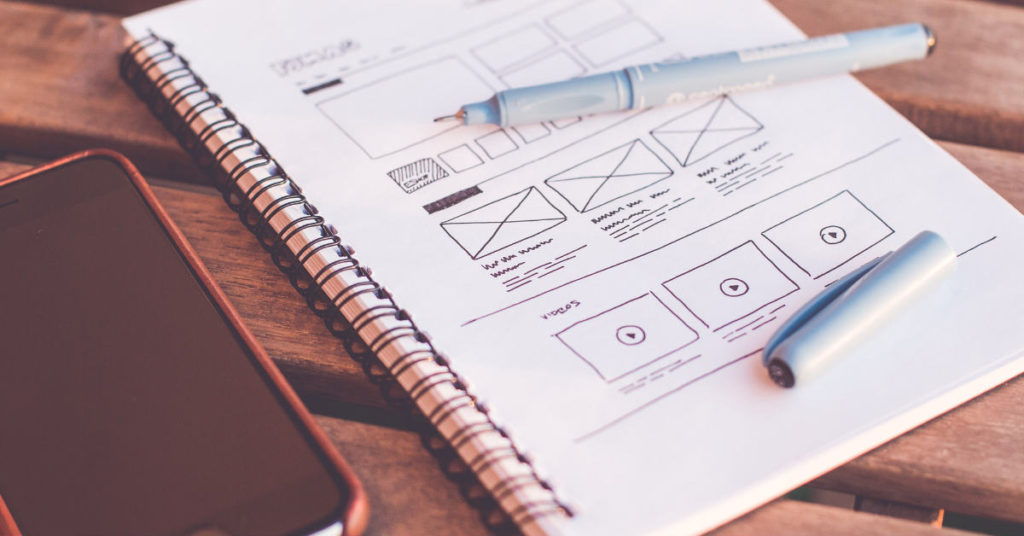25 Sep

Writing a newsletter creates a connection with your customers through emails. It shows how much you appreciate your customers through promotions and keeps them updated on your brand or start-up. If you’ve just decided if newsletter writing is right for your start-up, it’s good to get the basics on how to write a newsletter. Many start-ups and brands report successes on using email newsletters, and it’s time your start-up follows the trend. In this article, we outline the importance of how to write an email newsletter and why you shouldn’t hesitate in doing so.
Why Your Start-up Needs to Send Newsletters

Your start-up needs an email newsletter because it helps you acquire new leads. A benefit of sending an email newsletter is to promote brand awareness and eventually lead to brand loyalty.
It’s also another way to engage and connect with your customers through a different platform. You don’t have to focus on a marketing angle all the time. Campaign Monitor reports so long as you send out relevant and reliable content that informs your subscribers of anything about your start-up, you’re on the right track.
1. Set Your Goals and Devise a Plan
Before you are 100% decided on sending your newsletters, it’s a good idea to sit back and assess if doing it would work for your start-up.
Making newsletters aren’t difficult. But it can take up some of your time if you’re unsure of what you want to send.
Hubspot reminds companies to keep their audience in mind and know their goals. Without figuring out these two, you’ll be wasting time and resources.
By this time in the marketing process, you should have identified your target audience. As part of goal setting, you should also determine what types of email you can send your target audience. For example, you’re sending out email newsletters for brand awareness or product promotions.
Once you have these two basic things in mind, you’re ready to plan.
Planning poses its challenges. But so long as you can organize a structure and your strategy, it will be easier to execute. From setting goals to creating a copy, don’t forget these two other important elements of planning your email newsletter strategy:
List building and segmentation
When it comes to how to write a newsletter, this tactic is not only for sending emails to your current customers. You’re building a list of both potential and current customers. You can build lists from customers that subscribed from your website, your landing pages, or even a survey.
Once you’ve figured out who your target audience is, you can build a list where you can send one type of email for another list. This way you’re able to send different content to target different audiences at once.
Tool application
You need to have an email automation system that not only gives you resources to create templates for an email newsletter. This software should also help you in sending different marketing and triggered emails to your subscribers.
TIP: Also, make sure that you will stay consistent when you send out your emails as you plan for your email newsletter. One of the overlooked parts of how to write a newsletter is that consistency is key. It applies to the copy, content, and even design. Ensure that even if you send different types of newsletters, the essence of your start-up and your overall message is intact.
2. Engage from Start to Finish
Imagine creating a good email newsletter but no one’s reading it or clicking on your call to action (CTA). You shouldn’t disregard your email subject lines since they’re essential in having your emails read by your subscribers. Even if they’re not part of the newsletter itself, your subject line will help you get the open rate you need.
After which, you need to consider the overall content of the newsletter. Many experts suggest that marketers should write a headline or title that would entice the reader. For headlines, make sure from the beginning you offer something of value.
The words: reports, guides, and insider can pique your subscribers’ interest as a headline.
If you can, stick to one main CTA. It can confuse your customers if you present plenty of those.
3. Build and Establish Trust
Not everyone who subscribes to a newsletter is looking to buy something. Newsletters do act as another way to communicate and market to customers. However, if your email newsletter doesn’t create an impact or value, then you’ll find your newsletters down the trash.
This is where you’ll need to find a balance of selling and informing your customers without being too aggressive. In doing that, you establish trust and authority as you send more email newsletters. To earn subscriber trust, you can be transparent by talking about your start-up or employees from time to time.
Once you have a newsletter, welcome them. By this time, you can offer a discount for subscribing or you can give them a guide on using your application or software.
Try not to sound that you’re selling them your product or service in every single newsletter. They might get bored and unsubscribe.
4. Craft Meaningful and Concise Copy
The copy is one of the essentials in how to write a newsletter.
A good copy will take your newsletter to the next level.
Newsletters tend to be concise because modern email newsletters are visual. Your customers usually skim your newsletter. It’s not because of the attention span, it’s because no one wants to spend time reading emails.
To capture their attention, your copy should be meaningful, compelling, and concise.
Not every customer would read every detail of your email. After all, you wouldn’t want them staying on the email. So consider your newsletter a preview of where you plan on leading them (e.g. website, social media).
5. Enhance with Design
Like traditional newsletters, email newsletters should also adhere to a design. Email newsletters focus on a structure that’s easy to browse by anyone.
Common email newsletters have photos for a brand’s products or stock images. Photos are essential in marketing and help balance out texts.
If text with a simple design (e.g. use of a color palette) suits you better, it’s also a common practice. It’s to make it more dynamic than just simple text.
Another thing to keep in mind is dimensions on a browser and a smartphone.
You should also consider fonts. You can use basic fonts like Arial or Verdana. Deviate from fancy looking fonts since you want to make your newsletter readable. Also, stick to just one type of font type (e.g. sans serif, serif) or font family.
Don’t be discouraged if you don’t have experience designing your emails. So far, there are more than 20 start-ups focused on email campaigning. Some of them offer a lifetime free but limited access to templates. That’s not all, design as a service has also emerged as an option for those not only needing graphic design for their branding but other deliverables as well.
6. Give Your Customers Options
If you’re familiar with receiving newsletters, you should know that companies are required to add an “Unsubscribe” or “Opt-out” option. It means these types of consumers don’t want emails cluttering their inbox. As a start-up, you’ll need to respect that decision. What you can do is to improve on your copy and ensure that it will get them subscribed.
Sujan Patel recommends that you can give them choices on what types of emails they can receive.
Allow them to receive emails about promotions or discounts, curated content, or how-tos. Eventually, you’re giving the customer a choice, which doesn’t end up in a total opt-out.
Another popular option to make sure you still have more subscribers in your email list is to let them choose the frequency of sending emails. Many experts have varied opinions over the frequency of emails you send to your customers. Some would go for a monthly option, some would depend on the necessity or event. In the end, it’s up to you how you send your email newsletter.
But it’s different if you give customers control. Let’s say you’re a start-up that can send emails weekly, monthly, or even daily. Make sure that your customers or clients are aware they can receive several emails depending on their choice. This way, you’re keeping them on your email list, while being considerate.
When in doubt, you can always test your emails.
7. Test Your Newsletter
It’s best practice to test your marketing emails. By testing, it could be a preview of your email newsletter before it goes live. It also means A/B testing, which means sending two different copies of newsletters to your target audience.
You should always keep in mind that you shouldn’t stick to a certain day of emailing or a certain type of copy or content. If you want to enhance customer engagement, you’ll need to find out how your email newsletters are performing. By checking your metrics and analytics, you can get a better sense of how to write a newsletter as well.
Don’t Miss Out on Writing an Email Newsletter
An email newsletter is a great way to update your customers on promotions and other news you may offer them. It’s a tried and tested way to entice your audience to purchase your product or service. It also helps you establish your start-up as an authority.
Leave a Comment
You must be logged in to post a comment.











jffhjdjjrrf www.yandex.ru
jffhjdjjrrf http://www.yandex.ru